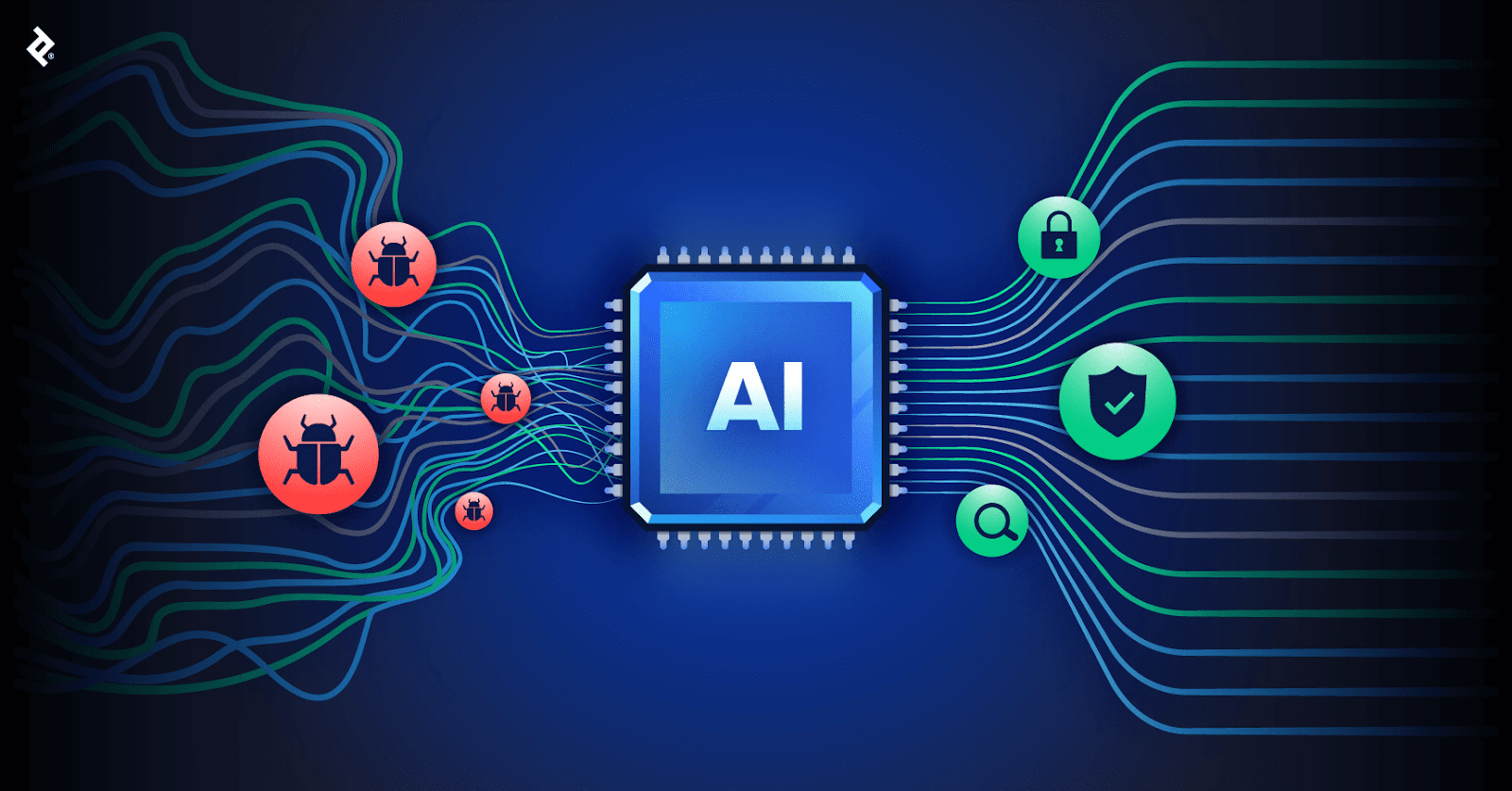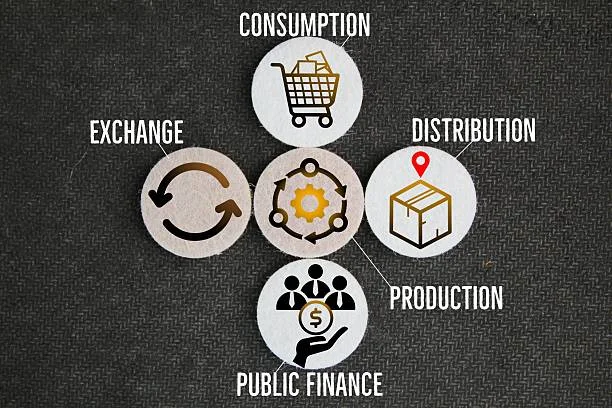TECHNOLOGY
Improving QA Processes with AI-Enhanced Home Health Care Software

In the dynamic world of home health care, quality assurance (QA) plays a critical role in maintaining patient safety, compliance, and operational efficiency. With ever-increasing documentation demands, stringent regulatory standards, and the need to deliver personalized care, agencies face mounting pressure to ensure quality across every aspect of their services.
AI-enhanced home health care software offers a transformative solution for streamlining QA processes. By automating repetitive tasks, reducing errors, and providing real-time insights, AI-powered tools empower agencies to elevate their quality assurance practices. This article explores how AI can redefine QA in home health care, offering actionable insights for agencies looking to optimize their operations.
The Challenges of Traditional QA Processes
Traditional QA processes in home health care are often manual, time-consuming, and prone to human error. These challenges can hinder an agency’s ability to meet high-quality standards consistently:
1. Manual Review of Documentation
Clinicians generate extensive documentation for every patient visit. Reviewing these records manually is labor-intensive and increases the likelihood of overlooked errors.
2. Delayed Feedback Loops
Quality checks often occur long after the patient visit, delaying corrective actions and potentially impacting care outcomes.
3. Inconsistent Standards
Human reviewers may apply QA criteria inconsistently, leading to variability in quality assessments across different teams or regions.
4. Regulatory Non-Compliance Risks
The complexity of regulatory requirements can result in missed elements, exposing agencies to audits, conditional surveys, and timely & costly fixes.
5. High Administrative Burden
QA processes consume valuable clinical and administrative resources that could otherwise focus on strategic initiatives or patient care.
How AI-Enhanced Home Health Care Software Transforms QA
AI-powered home health care software introduces automation and intelligence to the QA process, addressing the inefficiencies of traditional methods and delivering unparalleled accuracy and speed.
1. Automated Error Detection
AI algorithms scan clinical documentation for inconsistencies, missing data, or errors. By flagging issues in real time, these systems ensure that records are complete and accurate before submission.
- Impact: Reduces the need for manual reviews, saving time and minimizing errors.
2. Standardized QA Criteria
AI-driven tools apply uniform standards across all documentation, ensuring consistency in quality assessments. This eliminates variability caused by human interpretation.
- Impact: Enhances reliability and builds trust in QA outcomes.
3. Real-Time Feedback for Clinicians
AI provides instant prompts to clinicians during patient visits, ensuring that all required fields and assessments are completed.
- Impact: Prevents documentation gaps, reducing the need for follow-up corrections.
4. Compliance Monitoring
Regulatory updates are integrated into the software, ensuring that documentation adheres to current standards such as OASIS or HIPAA requirements. AI can also generate compliance reports, simplifying audits.
- Impact: Reduces the risk of non-compliance penalties and builds a culture of accountability.
5. Analytics-Driven Insights
AI-powered dashboards provide data on common documentation errors, clinician performance, and trends in patient care. These insights enable agencies to address systemic issues and continuously improve their QA processes.
- Impact: Drives proactive quality improvements and operational efficiency.
6. Scalable QA Processes
As agencies grow, manual QA processes can become a bottleneck. AI tools scale seamlessly, handling larger volumes of documentation without compromising quality.
- Impact: Supports agency expansion without adding proportional administrative costs.
Key Features of AI-Enhanced QA Tools
When selecting AI-powered home health care software, agencies should look for features that directly enhance QA capabilities:
- Natural Language Processing (NLP): Enables the software to analyze clinical notes and identify errors or omissions.
- Customizable QA Checklists: Allows agencies to define specific criteria for quality reviews.
- Integrated Feedback Mechanisms: Provides real-time prompts and suggestions to clinicians during documentation.
- Compliance Tracking: Monitors adherence to regulatory requirements and generates compliance reports.
- Dashboards and Reports: Visualizes data for trend analysis and performance monitoring.
Benefits of AI-Enhanced QA for Home Health Care Agencies
1. Time Savings
Automating documentation reviews and compliance checks reduces the time spent on QA tasks, allowing staff to focus on patient care.
2. Error Reduction
AI systems excel at identifying discrepancies and ensuring complete records, minimizing errors that could impact billing or care delivery.
3. Improved Staff Satisfaction
Providing clinicians with real-time feedback reduces frustration from post-visit corrections, improving job satisfaction and retention rates.
4. Higher Patient Satisfaction
By focusing on the patient in the home, agencies can deliver consistent, high-quality care that meets patient expectations.
5. Cost Efficiency
Automation lowers administrative costs and mitigates risks associated with non-compliance or errors, contributing to overall financial health.
How to Implement AI-Enhanced QA Tools
Transitioning to AI-powered QA tools requires careful planning to maximize their effectiveness:
- Conduct a Needs Assessment: Identify the specific pain points in your current QA processes that automation can address.
- Choose the Right Software: Evaluate solutions based on their QA features, scalability, and ease of integration with existing systems.
- Train Your Team: Ensure that clinicians and administrative staff understand how to use the software effectively.
- Monitor Performance: Regularly review the software’s impact on QA outcomes and make adjustments as needed.
- Stay Updated: Keep the software updated to leverage new features and maintain compliance with evolving regulations.
The Future of QA in Home Health Care
The integration of AI into QA processes is just the beginning. Future advancements are likely to include:
- Predictive Analytics: AI could predict potential quality issues based on historical data, allowing agencies to address them proactively.
- Voice Recognition: Enhanced voice-to-text capabilities could further simplify documentation, ensuring even greater accuracy.
- Telehealth Integration: QA tools may expand to evaluate the quality of virtual visits, ensuring consistency across care modalities.
By staying ahead of these trends, agencies can continue to refine their QA processes and deliver exceptional care.
Conclusion
AI-enhanced home health care software revolutionizes quality assurance by automating routine tasks, reducing errors, and ensuring compliance with regulatory standards. The benefits extend beyond operational efficiency, enhancing patient care, staff satisfaction, and financial stability.
TECHNOLOGY
Your Access, Upgraded: The Professional Benefits of RM1.to

In today’s fast-paced digital economy, professionals are constantly seeking tools that streamline workflow, increase efficiency, and maintain security. One platform that has been gaining attention in the online workforce community is rm1.to. Designed to provide secure and efficient access to specialized digital services, rm1.to is redefining how professionals work, collaborate, and manage tasks in a digital-first environment.
Simplified Access for Professional Tasks
One of the standout benefits of RM1.to is its focus on streamlined access. For many professionals, managing multiple digital tools, accounts, and permissions can be a time-consuming and error-prone process. RM1.to addresses this by offering a centralized platform where users can quickly access the services they need.
Whether it’s specialized data work, content creation, or technical support, RM1.to ensures that professionals can connect with verified service providers efficiently. By eliminating the usual friction associated with task assignment, approval, and payment, users can focus on productivity rather than administrative hurdles.
Enhanced Security for Peace of Mind
Security is a top priority in any professional setting, and RM1.to integrates it as a core feature. Traditional methods of managing access and digital collaboration can leave sensitive information exposed to risk. RM1.to mitigates this with built-in protections for both clients and service providers.
For professionals, this means confidence in every interaction. Payments are securely handled, services are verified, and access is monitored to prevent unauthorized use. The platform’s focus on transparency and accountability ensures that tasks are delivered reliably, reducing disputes and creating a trustworthy environment for all users.
Efficiency That Supports Growth
Another major benefit of RM1.to is its ability to support fast, efficient workflows. In the modern digital workforce, speed is often as critical as accuracy. RM1.to allows professionals to delegate micro-tasks quickly without worrying about complex onboarding or verification processes.
By combining rapid access with secure, verified transactions, the platform allows individuals and teams to scale their operations efficiently. Professionals can take on more projects, meet deadlines faster, and maintain high-quality standards—all without compromising security or accountability.
Flexibility for Diverse Professional Needs
The versatility of RM1.to is another reason it appeals to professionals. The platform is not limited to a single industry or type of task. From creative projects and technical support to data analysis and research, RM1.to can accommodate a wide range of professional requirements.
This flexibility enables professionals to adapt to evolving workloads, delegate tasks efficiently, and access specialized expertise on-demand. The platform acts as a bridge, connecting users with services that would otherwise require time-intensive searches or additional hires.
Building Trust Through Transparency
Trust is essential in any professional relationship, particularly in digital environments where users may never meet in person. RM1.to fosters trust through clear service descriptions, structured workflows, and feedback mechanisms. Both clients and service providers can review performance and maintain accountability, which strengthens collaboration and minimizes misunderstandings.
For professionals, this transparency not only ensures reliability but also allows them to make informed decisions when choosing services or partners. The platform’s structure encourages ethical practices and responsible usage, creating a professional ecosystem built on trust.
Conclusion
RM1.to offers a combination of security, efficiency, and flexibility that makes it a valuable tool for today’s digital professionals. By simplifying access, ensuring secure transactions, supporting scalable workflows, and fostering trust, the platform enables users to focus on what truly matters: delivering high-quality work and achieving professional goals.
In a world where digital tasks are growing in complexity and volume, RM1.to represents a meaningful upgrade in how professionals manage their work. Its features provide the support, speed, and reliability needed to thrive in a competitive digital workforce, making it a go-to platform for those seeking secure and efficient access to specialized services.
TECHNOLOGY
The Power of Curation: Ultimateshop’s Quality-First CC Strategy

In the digital world, access to information is only valuable when it is accurate, relevant, and well-organized. For platforms dealing with credit card (CC) data, this principle is even more critical. Raw data dumps may contain enormous amounts of information, but without proper curation, their utility ultimateshop is limited and their reliability questionable. ultshop.mobi has distinguished itself by adopting a quality-first strategy, using careful curation to transform large datasets into actionable, trustworthy resources quality-first CC.
The Limitations of Raw Data
Many platforms prioritize volume over precision, offering massive collections of CC information that are often outdated, duplicated, or poorly formatted. While this approach may appeal to users seeking large datasets, it comes with significant drawbacks. Errors, inconsistencies, and irrelevant entries increase the risk of flawed analysis or inefficient workflows. For developers, researchers, and testers, these issues mean extra time spent cleaning and verifying data, reducing productivity and increasing the potential for mistakes.
Ultimateshop recognized that the key to meaningful value is not simply the quantity of data but the quality. By prioritizing accuracy, organization, and usability, the platform provides users with curated datasets that are ready for immediate, reliable use quality-first CC.
Curation as a Core Strategy
At the heart of Ultimateshop’s approach is curation—a deliberate process of selecting, verifying, and refining data to ensure it meets strict quality standards. Every CC entry is evaluated for validity, accuracy, and relevance before inclusion. Duplicates are removed, formatting is standardized, and outdated or invalid entries are filtered out.
This rigorous curation process ensures that users receive datasets they can trust. Rather than sorting through thousands of questionable entries, users can focus on applying the information to research, testing, or legitimate project work. The curated approach turns potentially chaotic datasets into structured, usable resources.
Enhancing Usability Through Organization
Quality-first curation goes beyond validation—it also emphasizes organization and accessibility. Ultimateshop structures data in a way that is intuitive and user-friendly. Categories, tags, and consistent formatting make it easy to navigate even large datasets quality-first CC.
This thoughtful organization saves users significant time and reduces the risk of errors. For tasks that require precision and speed, such as testing payment systems or analyzing trends, the ability to access well-structured, reliable data is invaluable. Ultimateshop’s curated lists are not only accurate—they are actionable.
Trust and Reliability as Key Differentiators
In an industry where credibility is crucial, Ultimateshop’s quality-first strategy establishes trust. Users can rely on the platform to deliver accurate, up-to-date information without the frustration of sifting through unreliable entries. By emphasizing curation, Ultimateshop ensures that its datasets are consistently dependable, setting it apart from competitors that focus solely on volume.
Furthermore, this commitment to quality supports ethical and secure usage. Curated, verified data minimizes the risk of errors that could lead to misuse or security vulnerabilities, aligning the platform with responsible digital practices quality-first CC.
Continuous Improvement and Adaptation
Ultimateshop’s strategy is not static. The platform continuously updates and refines its curated datasets, incorporating new information while removing outdated entries. This dynamic approach ensures that users always have access to relevant, accurate data, allowing the platform to adapt to evolving needs and maintain its high standards over time.
Conclusion
Ultimateshop demonstrates the transformative power of curation in the CC data space. By prioritizing quality over quantity, verifying entries, organizing information effectively, and maintaining ongoing refinement, the platform provides reliable, actionable datasets that enhance efficiency and trust.
TECHNOLOGY
The Hidden Pathways of Vclubshop’s Digital Marketplace

In today’s interconnected world, the digital underground has become a sophisticated ecosystem where stolen data, illegal services, and cybercrime tools are exchanged. Among the platforms that have emerged in this shadowy landscape is vclubshop, a marketplace known for facilitating the trade of compromised data and other illicit digital goods vclub shop. Understanding how such marketplaces operate can help individuals and organizations strengthen their cybersecurity posture and respond effectively to emerging threats.
1. Exploring the Structure of Vclubshop
Vclubshop functions similarly to a legitimate e-commerce platform, but with an illicit purpose. Its structure includes several key elements:
Product Listings – Stolen data, including login credentials, payment information, and personal identity records, is organized for sale.
Seller Ratings and Reviews – Like legal marketplaces, buyers assess sellers based on feedback and reputation, which fosters trust in an otherwise anonymous environment.
Secure Transactions – Cryptocurrencies are typically used to maintain anonymity and reduce the traceability of purchases.
Anonymity Tools – Users often rely on VPNs, encryption, and other privacy measures to avoid detection by authorities.
By mimicking the structure of legitimate marketplaces, platforms like Vclubshop create a sense of order that allows illicit transactions to occur efficiently.
2. The Lifecycle of Data in the Marketplace
Stolen data rarely remains isolated; it passes through multiple stages before reaching end-users:
Acquisition – Hackers obtain data through breaches, phishing, malware, or social engineering.
Verification and Packaging – Data is often checked for validity and organized into packages for sale.
Marketplace Listing – The verified data is uploaded to platforms like Vclubshop.
Purchase and Exploitation – Buyers use the data for identity theft, financial fraud, or account takeovers, or resell it in other underground markets.
This pipeline shows how a single breach can have far-reaching consequences in the digital ecosystem.
3. Why Vclubshop Persists
Several factors contribute to the resilience of underground marketplaces:
High Demand – Stolen data fuels identity theft, fraud, and cyberattacks, creating a continuous market.
- Global and Decentralized Operations – Transactions cross borders, making enforcement and prosecution challenging.
Advanced Anonymity Measures – Cryptocurrency payments and encrypted communication systems protect both buyers and sellers.
These conditions create a marketplace that is difficult to disrupt and continuously adapts to law enforcement efforts.
4. The Risks to Individuals and Organizations
Even if someone is not directly interacting with platforms like Vclubshop, stolen information can impact them indirectly:
Account Compromise – Credentials sold on such marketplaces can be used to take over online accounts.
Financial Fraud – Payment information can be exploited for unauthorized transactions.
Identity Theft – Personal data can be used to create fraudulent documents or access services.
Awareness of these risks is the first step toward prevention.
5. Strategies for Protection
Protecting yourself and your organization from the effects of marketplaces like Vclubshop requires proactive measures:
Use unique, strong passwords for all accounts.
Enable multi-factor authentication wherever possible.
Monitor financial statements and credit reports regularly.
Keep software and devices updated to patch security vulnerabilities.
Educate users and employees about phishing and social engineering attacks.
For organizations, regular cybersecurity audits, network monitoring, and incident response planning are essential to minimizing exposure.
6. Understanding the Digital Underground
While platforms like Vclubshop operate outside the law, analyzing their structure and operations helps demystify the digital underground. By understanding the hidden pathways through which stolen data travels, individuals and businesses can take informed steps to secure sensitive information. Cybersecurity today is not optional—it is a critical part of navigating an increasingly digital world.

 BUSINESS9 months ago
BUSINESS9 months agoBrand Visibility with Imprint Now and Custom Poly Mailers

 HEALTH8 months ago
HEALTH8 months agoHappy Hippo Kratom Reviews: Read Before You Buy!

 HOME IMPROVEMENT9 months ago
HOME IMPROVEMENT9 months agoThe Do’s and Don’ts of Renting Rubbish Bins for Your Next Renovation

 LIFESTYLE9 months ago
LIFESTYLE9 months agoThe Disciplinary Wives Club: Spanking for Love, Not Punishment

 ENTERTAINMENT1 month ago
ENTERTAINMENT1 month agoExploring the Kristen Archives: A Treasure Trove of Erotica and More

 TECHNOLOGY8 months ago
TECHNOLOGY8 months agoDizipal 608: The Tech Revolution Redefined

 BUSINESS10 months ago
BUSINESS10 months agoExploring the Benefits of Commercial Printing

 HEALTH5 months ago
HEALTH5 months agoYour Guide to Shedding Pounds in the Digital Age












